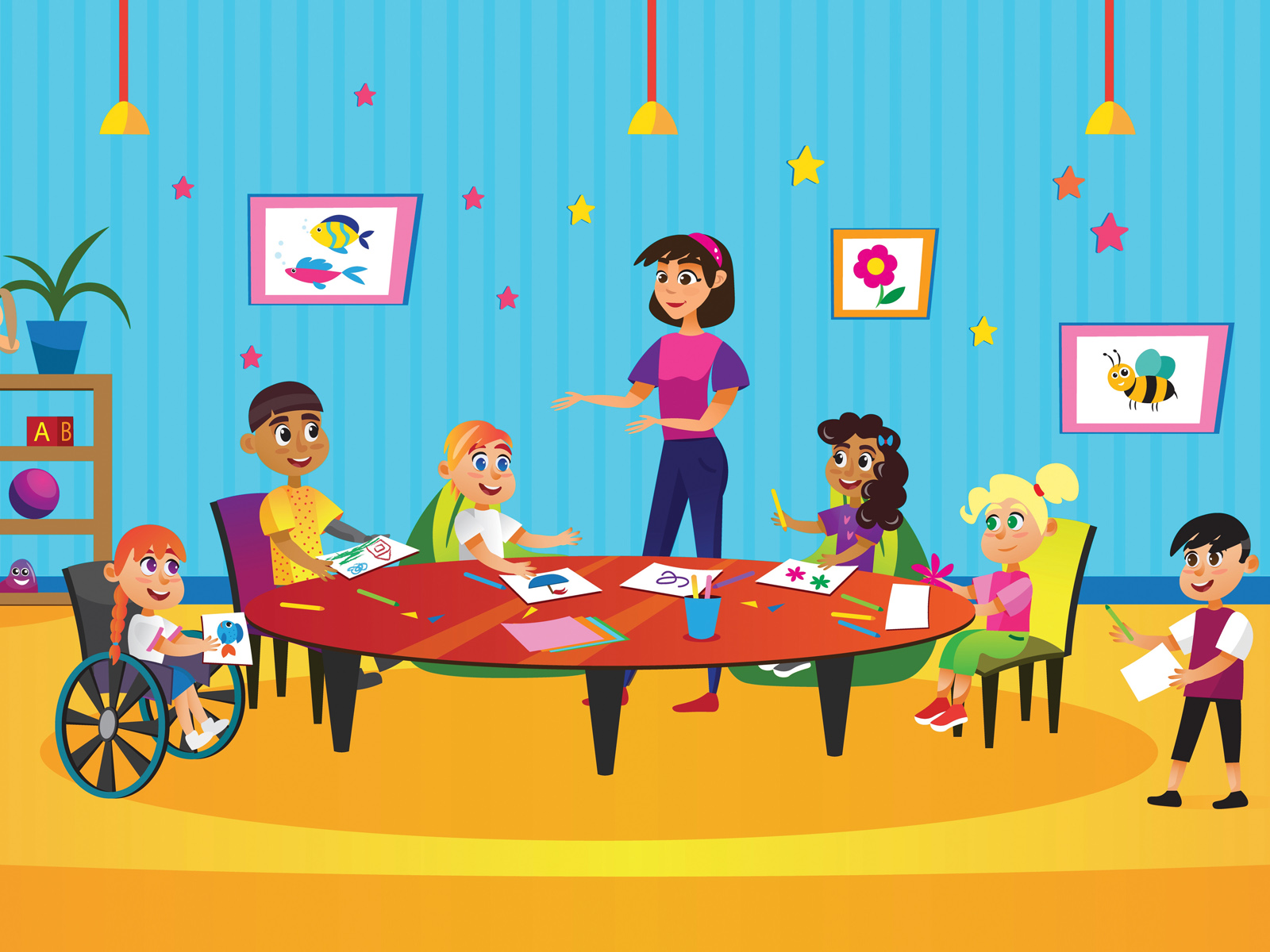By Cynthia Lockrey
Inclusion is a big buzz word in education right now. On any professional development day, teachers and school administrators are invited to attend workshops and presentations on how to make classrooms more inclusive for everyone.
While there are many ways all kids benefits from inclusive classrooms, I have found that most parents have no idea what inclusion means or why they should care. I have even heard parents say, “That’s for kids with disabilities. My kid doesn’t have any learning issues.”
New solutions for old problems

Here’s the deal—every student has a unique learning style. Kids are not factory produced, which means they’re all different. Inclusion is about recognizing and working with these differences instead of having a one-size-fits-all approach.
One area that interests me is classroom seating. Many of us remember sitting at a desk in hard plastic or wooden chairs. We spent most of our school day at these desks, only leaving for gym class or recess.
I don’t know about you, but I hated sitting at my desk. It was uncomfortable, and often too short for my long, gangly legs. I wanted to stretch out instead of being confined. I did not have ADHD, low muscle tone or mobility issues. I was a “normal” neurotypical student, yet I struggled with the confines of standard classroom seating.
Here’s where inclusive seating helps all students. Instead of only having desks and hard chairs, an inclusive classroom has a number of seating options. These can include beanbag chairs, exercise balls, scoop chairs, couches, cushions on the floor and more.
While these options are often brought into the classroom to help a student who has difficulty with traditional seating, they are not for the exclusive use of one student. The new seating options are enjoyed by all students. This is inclusion.
Building community

Many teachers have told me how making small changes, like introducing inclusive seating, have benefited the entire classroom. Students who struggle with focusing at their desk are able to complete their reading when laying on a cushion or sitting on an exercise ball. The seating options are not a distraction, but rather allow kids to find a space that makes them comfortable. This helps foster their learning.
Inclusion also means teaching to the different learning styles and abilities in the classroom. Gone are the days of segregating kids with disabilities into special education classes.
In the case of a child who has difficulty with noise, a loud classroom can overwhelm the child and lead to a meltdown. The best way to avoid this is to manage classroom noise as well as offer a quiet space with noise reducing headphones or a nook away from the main traffic areas.
An inclusive classroom opens up this space to all students

One of my daughter’s teachers created a quiet nook that students can use whenever they need a break. They can take their work with them or just sit and relax.
While this space was initially created to provide a quiet area for a child with autism, it is open to and used by all students. Its frequent use sparked a conversation in the classroom about noise, with many students saying how difficult they found it to concentrate when the class was loud. As a result, instead of one student being singled out, the students collectively came up with ways to reduce the noise in the classroom.
Everyone benefits
I love these examples of the many ways inclusion in the classroom benefits all students, not just kids with disabilities.
My hope is inclusion will move beyond a buzzword to being a reality in all classrooms—and in all parts of society. All parents, not just those of us raising kids with disabilities, need to support inclusion.
I promise, the end result will benefit all kids.
Cynthia Lockrey is the author of Your Child’s Voice: A Caregiver’s Guide to Advocating for Kids with Special Needs, Disabilities or Others Who May Fall Through the Cracks and Bed Rest Mom: Surviving Pregnancy-Related Bed Rest With Your Sanity and Dignity Intact.














